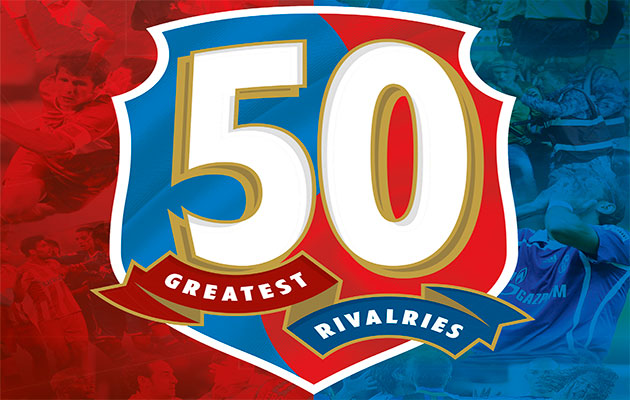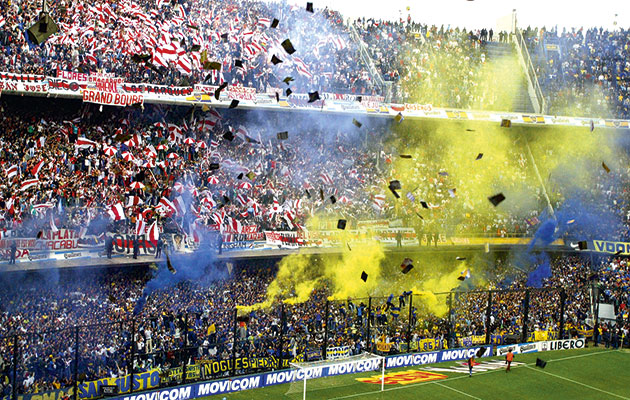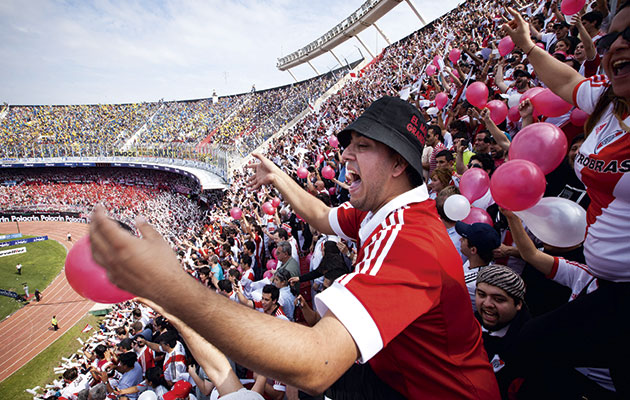Even if the football on display has been in decline over the past decade, the intensity and passion of the Superclasico make it still the fiercest and most enduring rivalry in South America.
“Boca-River comes before everything,” explains former Boca defender Roberto Mouzo who played in nearly 30 Superclasicos. “I still miss it.”
And Leopoldo Luque, a 1978 World Cup-winner with Argentina who scored the winning goal for River against Boca on his debut for the club, says: “Anyone who says it’s just another game is lying. It is not only the Argentinian Superclasico, it is also the South American Superclasico.”
The Superclasico as an institution has transformed since the days of Mouzo and Luque in the 1970s and 1980s, but it remains a fixture that attracts attention and fans from across the region.
“Boca-River, or River-Boca, is something all supporters in the world have to see,” claims Guillermo Tofoni, who organised the Argentinian national team’s friendlies for many years and now handles the Superclasico friendlies, which are staged during the summer around the country. “We are trying to move this derby around the world,” he adds of a game that has already been staged in Mexico’s Azteca. Organisers are now looking at Spain, London and China as potential venues to take the game in the future.
Yet as the Superclasico becomes increasingly and inevitably globalised, it is a rivalry that is firmly rooted in the port of Buenos Aires.
Today, Boca and River are located at opposite ends of the city, in very different neighbourhoods, feeding into the myth that the fixture pits the wealthy against the workers. But in 1915, a decade after both clubs were founded, their stadiums were just five blocks apart.
Both clubs were set up by the sons of immigrant families in the working class area of La Boca, and both opted for a splash of English in their name to add some perceived glamour.
With both clubs growing in size rapidly and offering a range of sports to their members, it was River who opted to leave the area. After a brief stay in the up-market neighbourhood of Recoleta, the club eventually settled in the north of the city where their Monumental stadium still stands. The move, in part, changed the social background of many of the club’s supporters, but by then River were already nicknamed “Los Millonarios” due to their outlay on strikers such as Bernabe Ferreyra and Carlos Peucelle.
Boca remained in the area and are now an integral part of the identity of an area now called The Republic of La Boca. Their iconic Bombonera home is central to this identity, and the nickname “Xeneize”, which is local slang for Genovese, has echoes of their immigrant background.
The architecture of the two club’s grounds, along with the perceived social and class differences at the two clubs, also created different styles of play. At the Bombonera – which Boca cannot increase in capacity as neighbours behind the stadium will not sell up – the supporters are almost on top of the pitch, while the athletics track around the pitch at El Monumental gives players more breathing space.
“River is a team that goes out to attack,” ex-Boca playmaker Juan Roman Riquelme told newspaper Clarin last year. “They don’t go out to defend because their fans make them take the initiative.” Roberto Passucci, a tough tackling midfielder from the 1980s Boca team, adds: “History shows that Boca traditionally score a goal and defend that lead with tooth and nail. River’s history show they want to win played well. That is the difference between the two clubs.”
Current River coach Marcelo Gallardo, who first joined the club at the age of 12, explains: “At River, you are told that you have to win, but do so playing well. Winning isn’t enough, the idea is to treat the ball well.” Gallardo played in several Superclasicos and was sent off in one particularly ill-tempered Libertadores Cup semi-final. “It is so passionate, so unbalanced,” he recalls.
“These games are so charged that it is difficult to remove yourself from it.”
These days, however, the saturation of matches means that much of the hype ahead of many Superclasicos is rarely justified. This year alone the pair have met seven times: twice in pre-season in January, which Boca won; twice in the Libertadores Cup quarter-finals, which River won after an infamous pepper-spray attack by Boca supporters; twice in the league, with Boca winning both; and finally a sponsor-appeasing one-off towards the end of the year, which River won.
The Libertadores Cup clashes, on the back of a Sudamericana Cup tie last year, did bring back a level of expectation and intensity that had been missing as the two had not met on the continental stage in a decade.
While River have won more domestic league titles than this year’s champions Boca – 36 to 31 – Boca have won the Libertadores six times compared to River, who won it for a third time this year.
These days, with income just a fraction of that earned by clubs in Brazil and Mexico, let alone Europe, it is true to say – better still, whisper it quietly – that River and Boca need each other far more than either may like to admit.
Despite their marketing value and their larger economies compared to other club sides in Argentina, both have to sell on promising talent quickly, meaning that teams are pulled apart and rebuilt every season.
And despite bringing through such recent talents as Gonzalo Higuain, Nicolas Gaitan, Erik Lamela, Ever Banega and Lucas Ocampos, the extent to which this impressive production line of talent translates into top-quality matches these days is somewhat debatable.
By Joel Richards
This article was first published in the December 2015 issue of World Soccer, as part of our celebration of the 50 greatest rivalries of world football.









